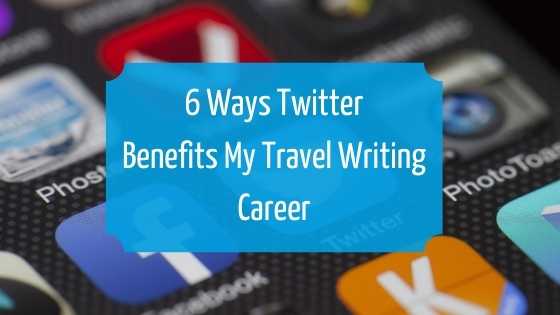Early in my travel writing career, I learned that I wasn’t finished with an article when the editor hit the publish button. That’s when the marketing phase kicks in, and social media is a crucial marketing component.
My most significant social media success has been on Twitter, which has positively impacted all aspects of my travel writing career. Here’s how using 280 characters benefits my travel writing career, one tweet at a time.
1. Spark article ideas.
As a travel writer, I’m always looking for new places to write about with fresh story angles. Recently I participated in a Twitter chat where a destination representative mentioned a museum.
That sparked an idea that would fit a specialty print publication I’d written for in the past.
I asked the travel bureau for contact information at the museum, and I had a new venue to incorporate into my writing. Next, I looked at that destination’s Twitter feed to see what other story ideas I could unearth.
2. Uncover new editors.
Some editors will make calls for pitches on Twitter. Follow editors, and these requests will show up in your feed.
Sometimes they are casting a wide net because they are looking for something specific; other times, they’re looking for new writers with different story angles.

In one instance, I found a call for pitches from an editor in the Philippines, pitched a story about my home state, placed it, and they notified me that they published it, all through Twitter and its associated direct messenger. The pitch was very informal.
They asked for clips, I sent them links, and it was a done deal—all for a print publication in the Philippines. Without Twitter, I doubt we would have found each other.
3. Increase my audience.
As a writer, I write to have my work read. I’ve found the larger my audience base is, the more freelance writing work comes my way. Twitter chats help drive readers to both articles on my blog and articles I’ve written for others.
I struggled with Twitter chats until I discovered Tweet Deck. The page allows me to see several columns in my feed at once, making it easy to keep up with the chat.
The hashtag feed, messages, and notifications are all in front of me at once. Now it’s easy to keep up with a Twitter chat. The days that I participate in increase my blog traffic tremendously.
One of my favorite Twitter chats is #TravChat, which happens every Wednesday at 5:30 a.m. and 2:00 p.m. Eastern. The topics are broad, like food and drink, with six specific questions, for example, “Where is the most amazing place that you’ve eaten?” Another choice chat is the Midwest Travel Chat, #MWTravelchat, focusing on Midwest regional travel in the United States.
It happens the first and third Wednesday of the month at noon Eastern. Search for chats on topics that interest you and get them on your calendar.
4. Facilitate collaboration with other writers.
Sharing other travel writers’ work with my Twitter followers helps them grow their readership, and when they re-tweet my work, it increases mine.
Twitter is a great place to find interesting articles to expand your horizons and potentially new travel destinations.
Once you find a writer, you enjoy reading, follow them on Twitter. Follow well-known travel writers on Twitter to see what they’re accomplishing.
Don’t hesitate to share your new byline.
It provides other writers with a source for new outlets to add to their database, a new venue to explore for a different story idea, and exposure to your writing style. Reading is part of learning to be a better travel writer.
5. Reveal new destinations.
Follow destinations on Twitter. See what they’re discussing. Engage with the venue before you pitch them. Once they see what you’re doing, they may reach out to you. If you’re querying them, they will already be familiar with your work if you follow each other on Twitter.
Do they have a new hotel in town? Let them see what you’re doing and writing about. Pitch them by showing them how you can benefit their destination on Twitter.
How can you help them get the word out to your readers? I’ve connected with breweries on Twitter and received invitations that read, “Next time you’re in town …” When the magazine publishes the article, I’ll share it on Twitter and tag the destination, so they’ll share it with their audience, driving more readers to the site.
6. Secure product offers.
I’ve had companies send me travel games and books to review because they found me on Twitter. The product offers happened even when I didn’t have a lot of followers.
While I rarely do a full product review, I do weave these items into my travel stories when I believe they will help my readers.
With all these benefits, create a Twitter account, and start tweeting.

